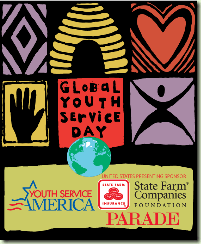Hey, my name is Danielle!
At the beginning of this year my eleventh grade class started a community garden. It was in partnership with the special education class. When we first started I thought; “Why are we doing this?” and “This is so lame!” But then we planted all kinds of fruits and vegetables in the garden.
When all of the vegetables were grown, my class and I made all different kinds of pasta sauce with the help of kids from the special education class. We helped them chop tomatoes, onions, green peppers, etc. Most people in my class looked at the special education kids thinking “They can’t do this” or, “They are not capable of doing that” because of their disabilities.
I did not think it was fair that not one of my peers gave them a chance, so I decided to sit down and have a nice and normal conversation with one of the boys in the class. He was really sweet, and he understood everything I said despite his disability. I felt so good about myself because I talked to him, which was different from my classmates.
When we were leaving, he gave me a hug and told me I made a difference in his life and that I made him actually feel normal. Now, every time he sees me in school he gives me a hug. He even calls me his sister! Some of the kids at my school think I am weird because I associate with these kids. But I know I made someone else feel happy, which ultimately increases my happiness in the end.
Service-learning has taught me a lot just from that experience. Even though I didn’t change the world, I made a difference in one person’s life. This not only made me feel happy but it made me want to become a better person too.
Note: Hear Danielle and another student Brandon’s story, by watching this inspirational video footage taken from the Service-Learning Youth Council Retreat in early December.
About Danielle: Danielle attends Willow Run High School in Ypsilanti. This is her first year serving as a member of the Service Learning Youth Council (SLYC).


